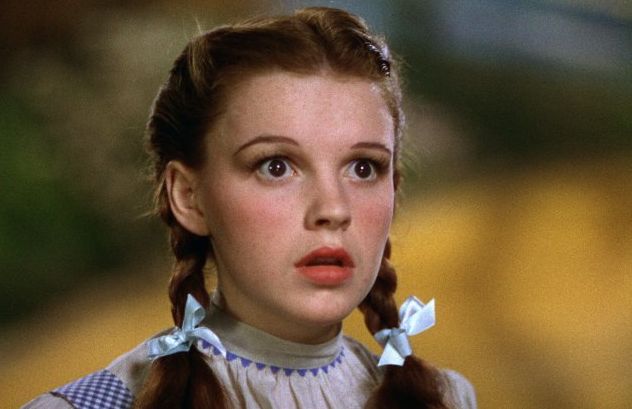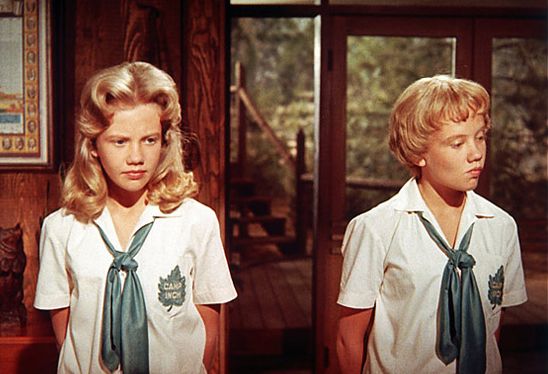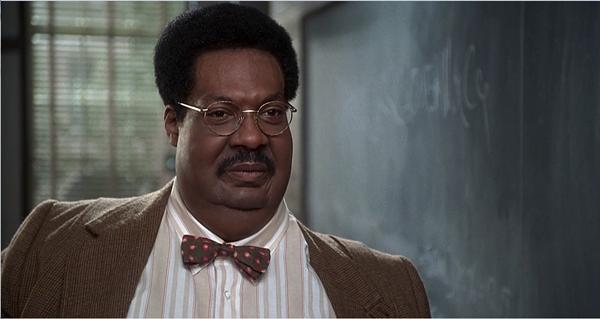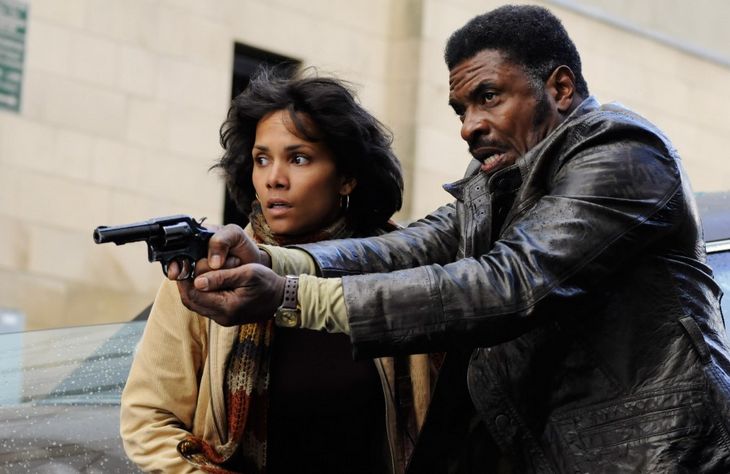Seeing Double: When Actors Play Multiple Roles in the Same Film
Tom Tykwer, Andy Wachowski, and Lana Wachowski’s
Cloud Atlas sees its massive and diverse cast tackling multiple roles, many of the actors stepping into characters of different genders, sexes, races, and ethnicities. Such performances are sure to bring controversy with them, but unlike films such as the problematic racial identity crisis drama
Pinky or Katharine Hepburn pretending to be Asian in
Dragon Seed, this casting isn’t meant to hinder actors who might already be marginalized from getting great roles. These acting decisions further exemplify the film’s themes of universality and that we’re all, as humans, connected.
Cloud Atlas hits theaters this weekend, so here’s a brief history of how the practice of actors stepping into multiple roles in the same film has worked throughout the years.
 The Wizard of Oz (1939)
The Wizard of Oz (1939)
What is there to say about
The Wizard of Oz that hasn’t been said already? Arriving in what many consider the best-ever year for American film, the musical serves as the signature film of the late legendary entertainer Judy Garland and often appears on lists accounting for the best films ever made.
We often regard this is a fun movie, and yes, few films are more entertaining, but there must be something about
The Wizard of Oz that extends beyond entertainment. If not, what does this musical – an oft-derided genre – about a girl far away from home do that sets it apart from other films that are merely meant to dazzle?
Much of it might come from the casting. Ray Bolger, Jack Haley, and Bert Lahr play the Scarecrow, the Tin Man, and the Cowardly Lion, respectively. They also portray three men who help Dorothy recover from a fall as she contemplates her life in Kansas.
The Wizard of Oz also casts Frank Morgan as Professor Marvel, the Wizard of Oz, and the Gatekeeper among others. The film additionally posits Margaret Hamilton in one of the greatest villain performances ever as the mean Miss Gultch and the Wicked Witch of the West.
It’s easy to dismiss this truth about
The Wizard of Oz as nothing more than a fun fact, but Christopher Vogler’s
The Writer’s Journey: Mythic Structure for Writers eloquently points out how Dorothy’s adventure actually sees her finding herself and that the multiple performances of the actors exemplify her inner conflicts regarding her identity. These characters help her discover things about her own self as they mirror both the outer dilemma of Dorothy getting home and the inner problems with seeking resolve.
The Wizard of Oz’s actors stepping into multiple roles emphasizes these changes.
 The Parent Trap (1961)
The Parent Trap (1961)
Hayley Mills experienced a nice childhood career with Disney that included this film. In
The Parent Trap, she portrays twin sisters who never met because their parents divorced and never introduced them to one another. When they happen to attend the same summer camp, they meet each other and decide to trick their parents into marrying each other again.
This one is a simple example for obvious reasons: the plot of the movie wouldn’t work otherwise. It’s not high art, and it doesn’t reach anything poignant under its glossy surface like
The Wizard of Oz, but
The Parent Trap is a fun staple of many childhoods that works primarily because of Mills.
 The Nutty Professor (1996, 2000)
The Nutty Professor (1996, 2000)
No, we’re not talking about the film with Dean Martin. This is the film franchise pioneered by Eddie Murphy’s performances as the title character and his family – all of whom are morbidly obese. Why an awesome talent like him would do this, I’ll never know. We’re basically dealing with crude gags that seem to exist solely for the purpose of existing. To be fair, Murphy deserves some kind of credit for being believable as each of the characters, but what does his casting in multiple roles add to the film other than novelty? He also pulls similar duties in
Norbit, which I haven’t seen and don’t plan on seeing. Take the hint, Eddie.
 Cloud Atlas?
Cloud Atlas?
The method of casting actors in multiple roles in the same film generally works, but it tends to be associated more with comedy and lighthearted ventures than drama. The one exception that comes to mind is the Tony Kushner-penned
Angels in America, the two-part play and eventual television miniseries about the AIDS crisis as it pervaded American culture in the 1980s. Of course, Tykwer and the Wachowskis are trying to pull off the same thing but by also incorporating different time periods into the mix. We’ll find out soon enough if
Cloud Atlas succeeds.
 The Wizard of Oz (1939)
What is there to say about The Wizard of Oz that hasn’t been said already? Arriving in what many consider the best-ever year for American film, the musical serves as the signature film of the late legendary entertainer Judy Garland and often appears on lists accounting for the best films ever made.
We often regard this is a fun movie, and yes, few films are more entertaining, but there must be something about The Wizard of Oz that extends beyond entertainment. If not, what does this musical – an oft-derided genre – about a girl far away from home do that sets it apart from other films that are merely meant to dazzle?
Much of it might come from the casting. Ray Bolger, Jack Haley, and Bert Lahr play the Scarecrow, the Tin Man, and the Cowardly Lion, respectively. They also portray three men who help Dorothy recover from a fall as she contemplates her life in Kansas. The Wizard of Oz also casts Frank Morgan as Professor Marvel, the Wizard of Oz, and the Gatekeeper among others. The film additionally posits Margaret Hamilton in one of the greatest villain performances ever as the mean Miss Gultch and the Wicked Witch of the West.
It’s easy to dismiss this truth about The Wizard of Oz as nothing more than a fun fact, but Christopher Vogler’s The Writer’s Journey: Mythic Structure for Writers eloquently points out how Dorothy’s adventure actually sees her finding herself and that the multiple performances of the actors exemplify her inner conflicts regarding her identity. These characters help her discover things about her own self as they mirror both the outer dilemma of Dorothy getting home and the inner problems with seeking resolve. The Wizard of Oz’s actors stepping into multiple roles emphasizes these changes.
The Wizard of Oz (1939)
What is there to say about The Wizard of Oz that hasn’t been said already? Arriving in what many consider the best-ever year for American film, the musical serves as the signature film of the late legendary entertainer Judy Garland and often appears on lists accounting for the best films ever made.
We often regard this is a fun movie, and yes, few films are more entertaining, but there must be something about The Wizard of Oz that extends beyond entertainment. If not, what does this musical – an oft-derided genre – about a girl far away from home do that sets it apart from other films that are merely meant to dazzle?
Much of it might come from the casting. Ray Bolger, Jack Haley, and Bert Lahr play the Scarecrow, the Tin Man, and the Cowardly Lion, respectively. They also portray three men who help Dorothy recover from a fall as she contemplates her life in Kansas. The Wizard of Oz also casts Frank Morgan as Professor Marvel, the Wizard of Oz, and the Gatekeeper among others. The film additionally posits Margaret Hamilton in one of the greatest villain performances ever as the mean Miss Gultch and the Wicked Witch of the West.
It’s easy to dismiss this truth about The Wizard of Oz as nothing more than a fun fact, but Christopher Vogler’s The Writer’s Journey: Mythic Structure for Writers eloquently points out how Dorothy’s adventure actually sees her finding herself and that the multiple performances of the actors exemplify her inner conflicts regarding her identity. These characters help her discover things about her own self as they mirror both the outer dilemma of Dorothy getting home and the inner problems with seeking resolve. The Wizard of Oz’s actors stepping into multiple roles emphasizes these changes.
 The Parent Trap (1961)
Hayley Mills experienced a nice childhood career with Disney that included this film. In The Parent Trap, she portrays twin sisters who never met because their parents divorced and never introduced them to one another. When they happen to attend the same summer camp, they meet each other and decide to trick their parents into marrying each other again.
This one is a simple example for obvious reasons: the plot of the movie wouldn’t work otherwise. It’s not high art, and it doesn’t reach anything poignant under its glossy surface like The Wizard of Oz, but The Parent Trap is a fun staple of many childhoods that works primarily because of Mills.
The Parent Trap (1961)
Hayley Mills experienced a nice childhood career with Disney that included this film. In The Parent Trap, she portrays twin sisters who never met because their parents divorced and never introduced them to one another. When they happen to attend the same summer camp, they meet each other and decide to trick their parents into marrying each other again.
This one is a simple example for obvious reasons: the plot of the movie wouldn’t work otherwise. It’s not high art, and it doesn’t reach anything poignant under its glossy surface like The Wizard of Oz, but The Parent Trap is a fun staple of many childhoods that works primarily because of Mills.
 The Nutty Professor (1996, 2000)
No, we’re not talking about the film with Dean Martin. This is the film franchise pioneered by Eddie Murphy’s performances as the title character and his family – all of whom are morbidly obese. Why an awesome talent like him would do this, I’ll never know. We’re basically dealing with crude gags that seem to exist solely for the purpose of existing. To be fair, Murphy deserves some kind of credit for being believable as each of the characters, but what does his casting in multiple roles add to the film other than novelty? He also pulls similar duties in Norbit, which I haven’t seen and don’t plan on seeing. Take the hint, Eddie.
The Nutty Professor (1996, 2000)
No, we’re not talking about the film with Dean Martin. This is the film franchise pioneered by Eddie Murphy’s performances as the title character and his family – all of whom are morbidly obese. Why an awesome talent like him would do this, I’ll never know. We’re basically dealing with crude gags that seem to exist solely for the purpose of existing. To be fair, Murphy deserves some kind of credit for being believable as each of the characters, but what does his casting in multiple roles add to the film other than novelty? He also pulls similar duties in Norbit, which I haven’t seen and don’t plan on seeing. Take the hint, Eddie.
 Cloud Atlas?
The method of casting actors in multiple roles in the same film generally works, but it tends to be associated more with comedy and lighthearted ventures than drama. The one exception that comes to mind is the Tony Kushner-penned Angels in America, the two-part play and eventual television miniseries about the AIDS crisis as it pervaded American culture in the 1980s. Of course, Tykwer and the Wachowskis are trying to pull off the same thing but by also incorporating different time periods into the mix. We’ll find out soon enough if Cloud Atlas succeeds.
Cloud Atlas?
The method of casting actors in multiple roles in the same film generally works, but it tends to be associated more with comedy and lighthearted ventures than drama. The one exception that comes to mind is the Tony Kushner-penned Angels in America, the two-part play and eventual television miniseries about the AIDS crisis as it pervaded American culture in the 1980s. Of course, Tykwer and the Wachowskis are trying to pull off the same thing but by also incorporating different time periods into the mix. We’ll find out soon enough if Cloud Atlas succeeds.